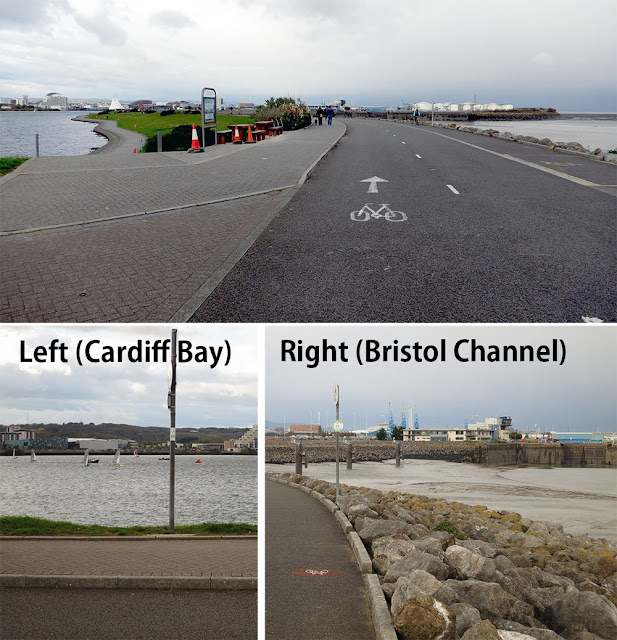Bridlington, southside of Flamborough (East Riding of Yorkshire) by N.Yamaguchi
Keywords: Beach, Coastal erosion, Chalk bed, Till
*See Framborough about the chalk bed and the Quarternary sediments here !
Keywords: Beach, Coastal erosion, Chalk bed, Till
*See Framborough about the chalk bed and the Quarternary sediments here !
I visited southside of Flamborough Head (Fig. 1). I started to walk along the shoreline from Bridlington.
 |
| Fig. 1 Aerial photo of UK and Flamborough Head by Google Map. |
It was impressive that there were shore protection and groynes along the shoreline of Bridlington (Fig. 2). When I returned to Hull, I investigated some previous studies about coastal erosion around east Yorkshire, and I learned that Bridlington area has been forced to take measures against coastal erosion for a long time. An old book Matthews (1913) reported that the coastal cliff, which consists of till, had been estimated approximately 1.8 m/year around Bridlington before the shore protection. I knew that Byobugaura, which is a famous coastal cliff in Japan (sometimes called ‘Oriental Dover’ :D), had retreated ~1 m/year before shore protection. So, I was surprised at the high rate of the shoreline retreat around Bridlington.
 |
| Fig. 2 Coastal area of Bridlington. |
When I walked north from Bridlington and came near Sewerby, surface feature of the coastal cliff changed from talus slope to precipitous shape (Fig. 3).
 |
| Fig. 3 Shoreline from Bridlington to Sewerby. |
This difference of the surface feature reflects geology: crumpy till and tougher chalk, respectively. A previous study estimated the retreat rate of the chalk cliff around Sewerby as ~0.3 m/year. This obvious contrast of coastal erosion between till and chalk cliff is interesting.
There are a lot of round chalk cobbles at the base of the cliff around Sewerby. They are also rare in Japanese coast.
 |
| Fig. 4 Chalk cliff and round cobbles at Sewerby. |
I climbed the stairs at Sewerby and walked to Bridlington. I was surprised that everyone can walk near the edge of the cliff there (Fig. 5). In Japan, top of coastal cliffs like there is generally prohibited to approach. However, around Sewerby, we can walk along paths near the edge. Additionally, there are good benches! That scene was intriguing for me because I felt a slight difference in the way of thinking about natural risks and responsibility between Japan and UK.
 |
| Fig. 5 Top of the cliff around Sewerby. |
























